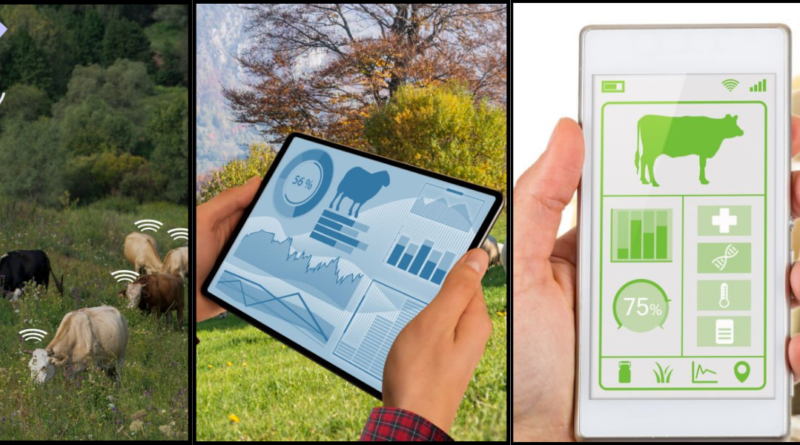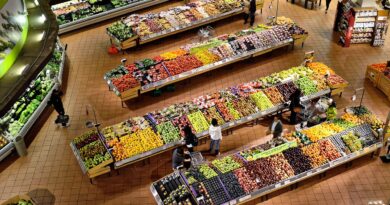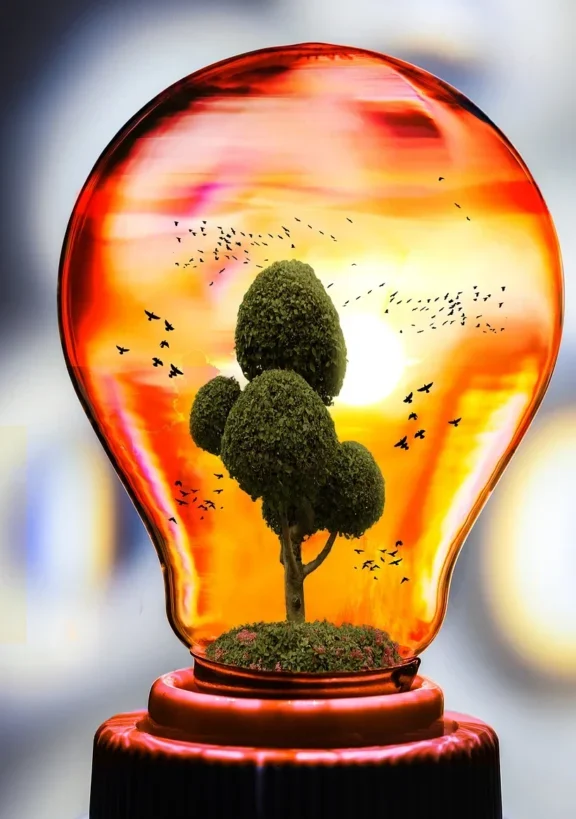Precision Livestock Farming with IoT: Animal Welfare in Agriculture

Introduction to Precision Livestock Farming (PLF): Transforming Agriculture Through Technology
Precision Livestock Farming (PLF) is a game-changing approach in agriculture, integrating advanced technologies to optimize livestock management. Essentially, PLF uses a network of linked sensors called the Internet of Things (IoT) to collect data in real time on the behavior, health, and surroundings of animals.
Definition:
Precision livestock farming is the application of technology-driven solutions to enhance the efficiency, productivity, and well-being of livestock. By using data analytics and automation to customize management techniques for specific animals or herds, it surpasses general approaches. By harnessing the power of technology, farmers can not only increase productivity and profitability but also ensure the welfare of their animals by proactively addressing issues such as health concerns, environmental conditions, and resource utilization. Precision livestock farming https://en.wikipedia.org/wiki/Precision_livestock_farming is essentially about identifying the individual needs of each animal and adjusting management measures to meet those needs, going beyond traditional one-size-fits-all methods.
Key Objectives:
- Boost animal production’s productivity and efficiency.
- Make sure that animal welfare is maintained by using data-driven and focused management.
- Maximize sustainability through efficient use of resources.
Core Technologies:
- IoT sensors to gather data in real time.
- Data analytics to support well-informed choices.
- Automation for managing and keeping an eye on specific animals or herds.
In the subsequent sections, we will explore the specific applications of IoT in precision livestock farming, showcasing how this technological revolution is reshaping agriculture and promoting responsible farming practices.
Applications of Precision Livestock Farming (PLF): Revolutionizing Agricultural Practices
Precision Livestock Farming (PLF) encompasses a wide array of applications, leveraging advanced technologies to enhance various facets of livestock management. The following are key applications that showcase the transformative impact of PLF:
Real-time Monitoring:
- Air quality, temperature, humidity, and other characteristics are monitored in cattle settings using Internet of Things (IoT) sensors.
- By identifying and addressing situations that could harm animal welfare in a timely manner, farmers can prevent stress or disease through real-time monitoring.
Health Tracking:
- Animals can benefit from wearable Internet of Things gadgets that track their health continuously.
- These gadgets may track vital signs, identify illness symptoms early, and assist farmers in taking preventative action to guarantee the health and welfare of their animals.
Precision Feeding:
IoT-enabled feeding systems offer accurate and personalized nutrition regimens for each animal based on data analytics.
By ensuring that every animal gets the right nutrients, this improves feed efficiency and fosters general health.
Automated Environmental Control:
- Lighting, ventilation, and temperature in cattle facilities are all managed by intelligent Internet of Things devices.
- Reducing stress, raising production, and improving the animals’ general comfort all benefit from maintaining ideal environmental conditions.
Behavioral Analysis:
- Farmers may see trends that could point to disease or discomfort by using IoT cameras and sensors to monitor animal behavior.
- By using behavioral analysis to uncover problems early, possible health problems can be avoided with timely action.
Reproductive Management:
- IoT technology helps to monitor the health of animals’ reproductive systems.
- Alerts for the best times to breed may be sent to farmers, guaranteeing productive cycles of reproduction and enhancing herd management overall.
Location Tracking:
GPS-compatible In large-scale farming operations, IoT devices are used to track the position of animals.
This facilitates the management of grazing areas, the prevention of theft, and the quicker identification of sick animals.
Data Analytics for Decision Making:
- Employing advanced statistical techniques, data gathered from several IoT devices is analyzed.
- Based on data insights, farmers may improve efficiency, save expenses, and improve animal care by making well-informed decisions.
Remote Monitoring and Control:
- Farmers can remotely monitor and manage animal facilities with the help of IoT technologies.
- Large farms can benefit greatly from this since it saves time and money while maintaining the animals’ ongoing care.
Sustainable Resource Management:
- Precision livestock husbandry using IoT applications promotes sustainable resource management. Mindful Consumption: Choosing Sustainable Products for a Healthier Future
- Farmers may lessen the influence they have on the environment and encourage environmentally friendly farming methods by optimizing feeding, water, and energy use.
Stress Reduction:
- The principle objective of precision livestock farming is to provide animals with stress-free settings.
- Livestock may be made healthier and happier by identifying and removing stresses with the use of IoT technologies.
Continuous Improvement through Feedback Loops:
- IoT sensors generate feedback loops that allow for ongoing development through the collection of data.
- Farmers have the ability to monitor trends over time, modify management strategies, and put new ideas into action to continuously improve the wellbeing of animals.
Customized Care for Individual Animals:
- Farmers are able to offer each animal specialized care thanks to their capacity to gather and evaluate unique data.
- The individual demands of every livestock member are satisfied thanks to this tailored approach, which enhances the animals’ general wellbeing.
Collaboration and knowledge sharing:
- Applications for the Internet of Things enable farmers to work together and share insights.
- The industry may collaborate to create best practices for precision farming The Role Of Artificial Intelligence in sustainable agriculture and animal welfare by exchanging data and experiences.
Cost-Efficiency and Resource Optimization:
- Precision Livestock Farming increases the economic viability of farming operations while also improving the wellbeing of the animals.
- Farmers may attain cost-effectiveness and long-term viability by maximizing resource use, cutting waste, and avoiding health problems.
Ethical Considerations and Consumer Awareness:
- With increasing consumer awareness and demand for ethically sourced products, precision livestock farming addresses ethical considerations in animal agriculture.
- Farmers adopting IoT applications can showcase their commitment to animal welfare, meeting the expectations of socially conscious consumers.
Training and skill development:
- Training is necessary for farmers and other agricultural experts to use IoT technology in farming.
- In order to optimize the advantages of precision livestock farming, this encourages skill development within the sector.
Regulatory Compliance and Transparency:
- IoT-enabled precision livestock farming aids farmers in adhering to animal welfare requirements.
- By giving customers knowledge about the circumstances under which the cattle are grown, it also improves transparency.
Animal Welfare Certification and Market Access:
- Precision Livestock With the use of IoT technologies, farming enables farmers to both fulfill and exceed animal care regulations.
- A certification in ethical methods can lead to entry into exclusive markets, as buyers are favoring more and more items from farms that put animal welfare first.
Precision Waste Management:
- Livestock waste may be optimally managed and optimized with the use of IoT sensors.https://en.wikipedia.org/wiki/Internet_of_things.
- This improves agricultural productivity and sustainability, in addition to addressing environmental issues.
Biosecurity Implementation:
- IoT-enabled, environmentally friendly practices make effective biosecurity measures possible.
- Farmers can stop the entry and spread of infections among their livestock by regularly monitoring each animal’s health and managing access points.
Future Prospects and Technological Advancements:
- Precision livestock farming is a dynamic industry where technological developments are always taking place.
- Future advancements might further transform how farmers care for their cattle by integrating robots, artificial intelligence, and machine learning.





Pingback: Drones for Sustainable farming: Modern practices.......